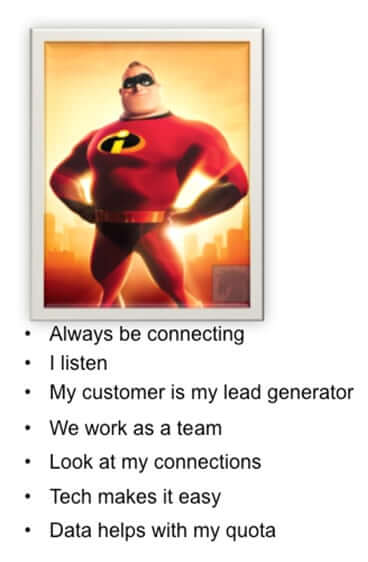We always wonder why people put up signs with “Today: Fresh Sushi.” Who would ever eat sushi that is not fresh?
It’s kind of like social selling. We have never met a successful sales person who is not social. So what then you ask is all the hype around social selling? It would have been clearer if “social selling” had been called “social media selling.” In essence what it is now called social selling describes how to best take advantage of social media channels to better listen and understand customers and engage with them. And that is exactly what really successful salespeople have always done: listening to and understanding the customers’ needs and requirements and responding at the right time.
Success in today’s social world means you have to also be listening to and communicating through new channels — social media channels like LinkedIn, Twitter and Google+. If you are wondering how to add that to your workday, then you are asking the wrong question. To be social is a primary task of the successful salesperson and customers today expect you to listen and engage with them through those channels.
Also, useful tools like Nimble make it easier to manage different social accounts and channels at once. Email, phone, and personal visits are not enough anymore because customers and prospects are using different channels to become better informed, to ask for recommendations, and to express their thoughts. Because the customer has changed, sales people will have to adapt. It may sound ironic, but this is reality: Social selling is using tools to improve on one of your key selling KPI’s — “being social.”
Before getting into the different easy steps to apply social selling in your sales process we would like to share the following illustrations, which summarize the difference between the old sales guy versus the new sales rep 2.0.
Here’s the Old Sales Guy:
And here’s the New and Evolved Sales Guy!
Many of the new qualifications have to do with social selling. To be able to really leverage the social web, you will need tech to make it easy.
So why wait? If you’re just starting we recommend you follow the following five easy steps.
1. Identify
What does the digital journey of your customers and prospects look like? On which networks are they active, who are the key influencers, and in which groups are they most active? Where do they go for recommendations? Determine the most critical channels for your customers and start with these first.
2. Plan
Without a clear plan many of the social selling activities become random and ad hoc. A tweet here, a Facebook post there. If you are not well organized you’re missing most of the impact you could have. Make sure you know what you want to achieve through social selling and what is expected (profile, updates, etc.) from each of the sales team members. Set up a single-page social selling policy that formalizes this. Sales will need to build up a virtual reputation on the social network just as they need to in person. Both will help with getting the deal done.
3. Listen and engage
This can take some time but here it is important not to be a broadcaster but rather someone who creates value by listening and providing relevant and timely information. This is how you gain credibility in the community and your intent here is twofold. When people are ready to buy they know how to find you, and you have the credibility you need to make the sale when the time arises. Marketing can help to make it easy to share new updates by providing a marketing content calendar with daily or weekly suggestions to the sales team about content to share.
4. Use social media throughout the sales cycle
Here your goal is to identify the lead and leverage social media throughout the sales cycle up to the close. Look for triggers that might indicate there is a window for additional opportunities. Examples are a job change, customers talking about competitive products, or buzz around your products or services. The earlier sales is involved in the buying cycle, the higher the chance is they will close the deal.
The actual use of social media once the lead is generated and qualified should be decided on a case-by-case basis.
5. Leverage social media for retention and advocacy
Leverage social media as a customer retention and customer advocacy tool. You can motivate your customer to share positive information, reward them or complement them using social networks and maintain a close relationship in person and through the social network. The same applies to possible negative remarks made by your customer. You have to monitor these and react adequately. Ignoring negative remarks can have negative implications.
So to close the loop from our opening premise, social selling is like fresh sushi. Eat it now! Don’t wait with social selling. If you do, you will have a proven advantage over your less social competitors. By implementing a solid social selling strategy you will enhance that never-changing KPI of selling — being an emphatic sales person.
Laura Nuhaan and Robert Hylkema are both partners at The Andeta Group, a consultancy firm focusing on increasing sales results through the effective use of innovative technologies and sales and marketing alignment. With buyer behaviors changing due to the increasing use of online, social, and mobile technologies, The Andeta Group has found a niche in helping organizations take advantage of these changes.



